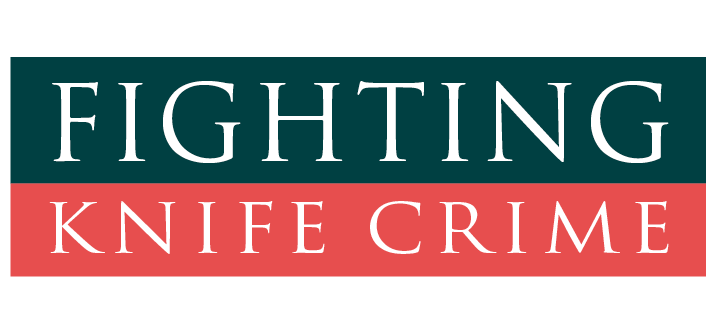Fighting Knife Crime: The Clinical Director for the London Violence Reduction Programme and Clinical Director for Violence Reduction NHSE gives an insight into the cause and effect of serious violence amongst young people

Martin Griffiths CBE, Consultant Trauma and Vascular Surgeon at Barts Health NHS Trust, and Clinical Director for the London Violence Reduction Programme and Clinical Director for Violence Reduction NHSE, gives us an insight into the cause and effect of serious violence amongst young people.
A child arrives on a hospital ward with traumatic injuries inflicted during a knife fight with someone of his own age. He may be brought in on a stretcher, still wearing his school uniform. This is not a fanciful scenario in London, where I grew up and have spent most of my working life. Grouped by age, the greatest number of victims of knife wounds are 16-year olds. The second biggest cohort is 15-year olds.
What responsibility does the NHS have towards this injured child? First of all, of course his injuries must be treated so that he is restored to physical health, which the NHS does brilliantly. The traditional view of the NHS’s responsibilities was to say we are a recovery service for the injured and the ill, and that is it. We patch them up and send them home: the rest is up to the police and social care services.
But a curious person asks what will happen to the boy who is discharged from hospital and sent straight back into the environment where he sustained his injuries? We start at the wrong end, in the wrong place, after the child has been injured. We need to know, and more importantly understand the story that preceded that injury.
No one reading this will be surprised to know that the victims of knife wounds are almost all from poor families, and from groups often denied access to the mechanics of authority. We know many of these people face inequalities and challenges, such as drug addiction, obesity, mental health issues, poor school results and poor employment prospects.
We could talk about the small amount of organised crime, which dominates the headlines, which is a separate issue. Most of what is termed ‘gang culture’ is simply groups of disadvantaged youths banding together to assert themselves. For a young person growing up in an environment with high levels of violence, carrying a knife is a way of saying “I handle my own business. I’m not docile I will not be a victim. Nobody crosses me. If they do, I’m going to deal with it myself.” It’s a way of asserting significance, of taking power.
As a consultant trauma surgeon at the Royal London Hospital, I came to the conclusion years ago that the NHS is brilliant at treating a person’s injuries but terrible at treating the injured person.
It’s an attitude that fails young patients and their families. It’s not socially responsible. It’s not even a money saver. The child who has been in one knife fight, who is sent straight back into the same environment, with nothing having changed in his life except that he has a new scar, is probably going to get involved in another fight. Next time, he may be the perpetrator rather than the victim. It’s very rarely an older person who has injured a teenager, and where that happens, there is usually some other driver involved, such as the drug trade. These injuries, in almost all cases, are inflicted by teenagers on teenagers. Treat one and send him home, and there will be another along soon.
To try to stop this churn, I set up the first wards-based violence reduction service in the Royal London Hospital in 2015 in which we recognise that a person’s injury is a marker of their life story. It’s not about criminality, it’s about understanding that person’s life. To start with, the patient is addressed by name and treated as a person with a back story. We’ve brought community police officers onto the ward, not to investigate a crime, but to make human contact with a teenager who is likely to think that the police are the enemy.
With funding from the Mayor of London’s Violence Reduction unit and charities, we introduced the patients to violence reduction specialists, people without medical background but with training as social workers or in related fields. They have the gifts of livedexperience, relatability and emotional intelligence that make them perfect for helping the victims of injury navigate this unfamiliar and scary landscape.
I believe Health and Care Services have a unique role in improving wellbeing and tackling inequalities for people impacted by serious violence. To make this a reality, the NHS London Violence Reduction Programme was set up in 2019 to support clinical teams and to work with experts and those with lived experience to co- create health and care approaches that work for communities.
And, in 2019, I had an email from Simon Stevens’ office, then the Chief Executive of the NHS, asking if I would take the programme nationwide. I was hugely uncertain. I’m a trauma surgeon: I am not professionally qualified as a public health expert, and questioned my credibility in this deeply emotive field. But in Leeds, Manchester, Middlesborough and in rural areas in the south west, many of the drivers are the same as they are in London, although the outputs of that societal failure appear different. More importantly, some of the solutions are applicable to the UK as a whole. So, I agreed, and was appointed the NHS’s first Clinical Director for Violence Reduction.
People question whether violence reduction is part of the business of the NHS. But the NHS is where the victims of that violence are treated. The NHS is the umbrella, not the rain. The question is how do we affect climate change?

Martin P Griffiths CBE













